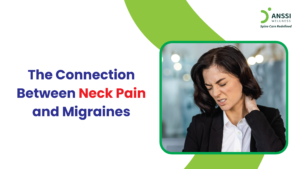Lower back pain affects millions of people worldwide, significantly impacting their quality of life.
If you are suffering from lower back pain, based on its duration and intensity, you can identify if it’s acute, subacute, or chronic pain. Understanding these types, their causes, and available treatments can help you manage your pain effectively.
Types of Lower Back Pain
Understanding the type of lower back pain is crucial for choosing the right treatment approach. Whether it’s acute, subacute, or chronic pain, effective solutions like non-surgical spinal decompression can provide lasting relief. By addressing the root causes and adopting a comprehensive care plan, you can improve your mobility and quality of life.
Acute Lower Back Pain
Acute lower back pain is short-term pain lasting less than four weeks. It often appears suddenly and can range from mild discomfort to severe pain.
Common Causes:
- Muscle or ligament strain due to heavy lifting or sudden movements
- Falls or injuries from sports or accidents
- Disc issues such as minor herniation
Treatment Options:
- Take rest and make changes in your activities to avoid stress.
- Find over-the-counter pain relievers like ibuprofen.
- Use hot or cold compresses to relieve inflammation.
Subacute Lower Back Pain
Subacute pain lasts between four and twelve weeks. It may start as acute pain but if it persists any longer it indicates more complex underlying issues.
Common Causes:
- Prolonged muscle strain
- Developing degenerative disc disease
- Repeated minor injuries from poor posture or improper lifting techniques
Treatment Options:
- Conduct physical therapy to strengthen muscles and improve posture.
- Choose non-surgical spinal decompression to relieve disc-related pain.
- Perform targeted exercises to restore your mobility.
Chronic Lower Back Pain
Chronic lower back pain persists for more than 12 weeks, often despite initial treatments. It can fluctuate in intensity and significantly disrupt your daily life.
Common Causes:
- Advanced degenerative disc disease
- Spinal stenosis, or the narrowing of the spinal canal
- Persistent herniated discs pressing on nerves
- Osteoarthritis or other age-related changes
Treatment Options:
- Apply pain management techniques, including mindfulness and stress reduction.
- Make a few lifestyle modifications such as maintaining a healthy weight and quitting smoking.
- Opt for non-surgical spinal decompression to relieve nerve pressure and promote healing.
- In severe cases, consider surgical interventions.
Why Choose Non-Surgical Spinal Decompression?
Non-surgical spinal decompression is a gentle, effective treatment for lower back pain caused by disc-related conditions.
This treatment uses a specialised decompression table to stretch the spine, creating negative pressure that helps rehydrate discs, reduce nerve compression, and promote natural healing. It is particularly beneficial for patients with herniated discs, sciatica, or degenerative disc disease.
Benefits of Non-Surgical Spinal Decompression:
- Non-invasive and drug-free
- Rather than concealing symptoms, addresses the underlying source of pain
- Enhances spinal health and mobility
- Safe for most patients when supervised by trained professionals
About ANSSI:
ANSSI Wellness focuses on improving the quality of life for patients suffering from spinal issues, aiming to provide relief where other conventional treatments have failed. Through advanced non-surgical spinal decompression treatment, ANSSI is committed to helping patients avoid surgery and recover in a safe, effective, and compassionate environment.



